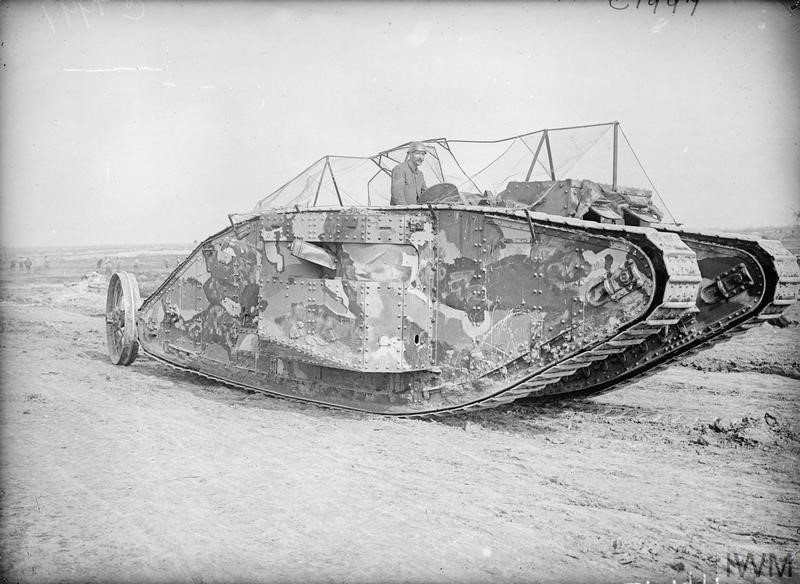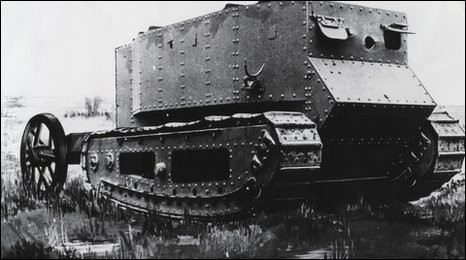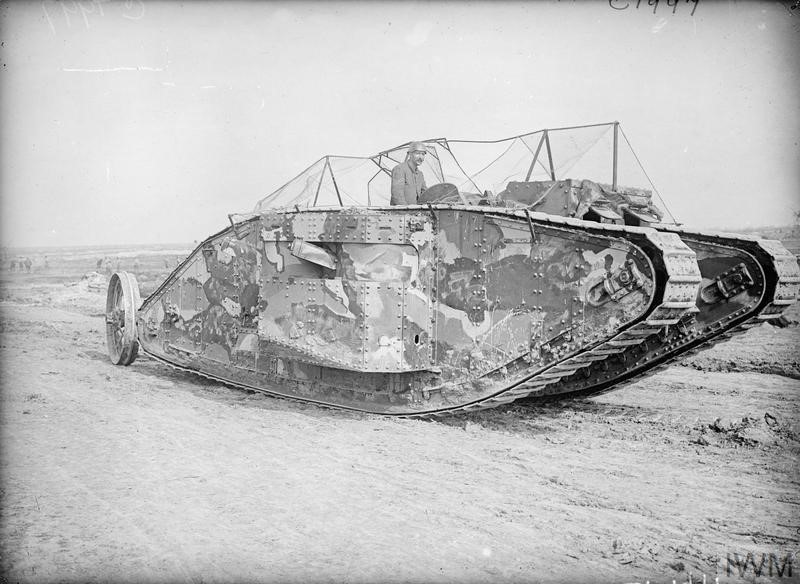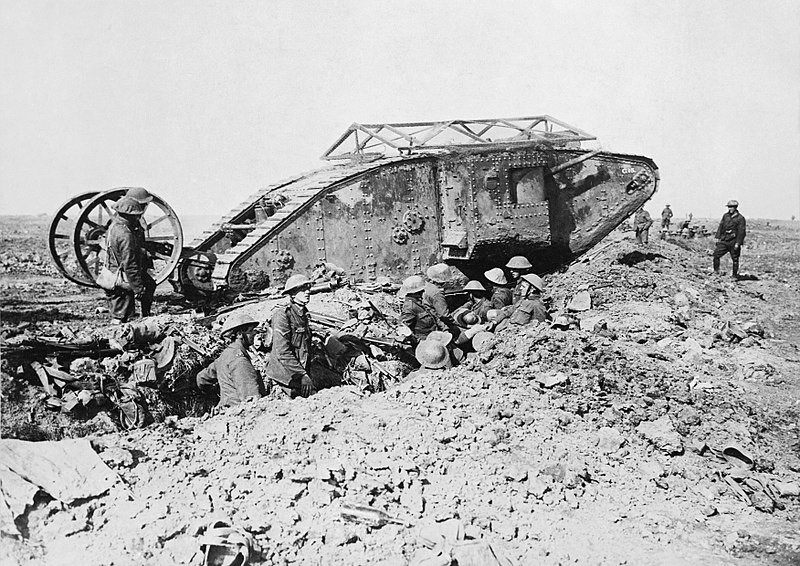
On September 06, 1915, a prototype vehicle called Little Willie leaves the assembly line in England. Little Willie did not seem to be successful in the war at that time. It fitted in ditches, weighed 14 tons and was able to drive at only 3 kilometers per hour. After months of development, on the morning of September 15, 1916, the British brought their weapons to Somme to change the war history forever. They called it Big Willie and it was ready to fight.

For hundreds of years the most important and deadliest weapons on the battlefields were cannons. Larger and stronger guns were constantly being produced. However, as this weapon developed, it became more difficult to move and relocate. The only way to overcome these difficulties was to create an armor that could move and protect the soldiers and a cannon with sufficient firepower.
In 1914, Colonel Ernest Swinton and Imperial Defense Secretary William Hankey, who served in the British army, came up with the idea of a vehicle surrounded by band-like carriers that could pass through enemy lines and move easily in difficult areas.
Inspired by warships, they called their ideas “Landship”. They applied to the British Navy Minister Winston Churchill and then they started to work.
To keep the project hidden from enemies, the construction workers were told that the vehicles they built would be used to carry water on the battlefield. (The alternative theory is that workers say so because the bodies of new vehicles resemble water tanks.) In both cases, the new vehicles were called “tanks” and the name stuck on the new vehicles like a label.
Big Willie’s improved version was first called Mother, and the vehicle was recorded as Mark 1 in the British Armed Forces inventory. In August 1916, two different models were put into service. The male model was carrying 2 guns, 3 8mm Hotchkiss machine guns and weighed 28 tons. The female model had 4 Vickers machine guns and 1 Hotchkiss, weighing 27 tons.
Mark 1 needed a team of 8 to run. The crew consisted of a vehicle commander, a driver and six people. The inside of Mark 1 (Will Big Willie ”) was quite small, noisy and hot. 6-12 mm thick armor was not very effective.
The first production of Mark 1 was made by Fosters and Metropolitan facrories. 25 of them produced in Fosters and other 75 in Metropolitan. The British army then ordered another 50 units to be produced so that they could form 6 units of 25 tanks.

On the morning of September 15, 1916, only 32 of the 49 Mark 1s sent to France were ready to action. The remaining 17 Mark 1 weren’t even fit to fight. Only one-third of the tanks participating in the Somme war were able to enter German positions. Some of them broke down in the area, some of them became unusable due to artillery shells, while others were stopped by the shells. Despite all its shortcomings, Mark 1 had succeeded in crossing the trenches and barbed wires, showing that tanks could play an important role in the war.

Despite all the improvements, Mark 1’s communication system was very primitive. Each tank was given a case of pigeons, a pen and paper. When they wanted to send news to the base, they would write their notes, tie them to the pigeons’ legs, and release the birds from the specially designed cover in the armor.
Later in the war, when new model tanks came into play, some Mark 1s were transformed to be used for material handling. With the development of wireless transmitters, some female Mark 1s were used as mobile wireless transfer stations. The radio system became operable only after the tank had stopped and a very long pole bearing the antenna array was erected.
Despite all the negativity and the tanks lost in the battle of Somme, the huge pile of iron proved itself. Huge machines were enough to spread fear to the enemies and became propaganda for Britain. Mark 1s have been sent to cities. Donations were started to be collected for further production and development of this tool. The propaganda was so effective that it turned into a race about which city would donate the most. The city made the most donation in Glasgow and was the winner of the race with £ 16 million.
Mark 1, also known as Big Willie, was primitive but effective. Although it failed in the first clashes, it took the title of the first tank on the battlefield and changed the future of warfare.
Technicial Specifications
- Crew: 8
- Battle Weight
- Male: 28 tons (28.4 tons)
- Female: 27 tons (27.5 tons)
- Armor: 0.23-0.47 inches (6–12 mm)
- Weaponry
- Male: Two 6-pound QF, three Hotchkiss Machine Guns
- Female: Four 0.303 Vickers Machine Gun, One Hotchkiss Machine Gun
Source: Wikipedia

Be the first to comment